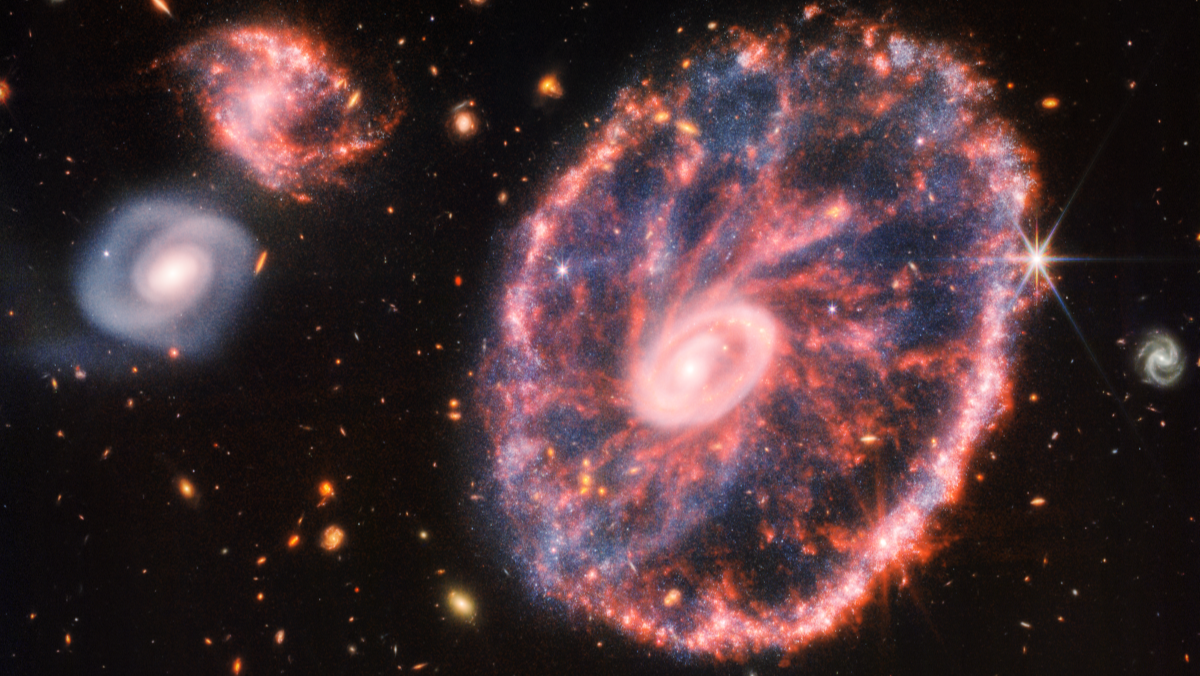NPR’s daily science podcast Short Wave covers hot topics but also random science stories you may not hear anywhere else. The short episodes focus on making science fun and interesting but also show that it’s accessible and imaginative. Nerdist chatted with the show’s hosts, Emily Kwong and Aaron Scott, plus scientist-in-residence Regina Barber, about some of the coolest stories in their 750+ episode archive.

Everything Everywhere All at Once
In a world teaming with multiverse movies, Daniel Kwan and Daniel Scheinert wrote and directed the surprising standout Everything Everywhere All at Once.
“All of us are a little sci-fi obsessed,” says Scott. “It’s the multiverse movie to end all multiverses. It took the science and the ideas to their extreme. Once you take it that far, you get to embrace the absurdity, but also the joy, behind these ideas. That’s why it works so well as art. By amplifying things, it surfaces them in a way that you wouldn’t if you stuck to the science.”

“The Daniels are out of the box creative thinkers,” says Kwong. “Like me, they loved school but didn’t go into science. I’m someone who has seen the way that science can be a portal to deeper understandings of the human experience. And the point they’re making about how art can be a way to process the hard truths of our universe feels very true. We’re not the Daniels, but I like to think that Short Wave is trying to do the same, to use science to help people feel less afraid about the world we live in.”
Science of Space Travel
Does pop culture depict space travel accurately? This episode confronts that question but also whether or not it matters. Should we just enjoy it or delve deeper into the science?

“I definitely didn’t think about it, didn’t care about it, just blithely watched like everyone else and thought the Tony Stark suit was cool,” says Kwong. “Knowing that it’s scientifically impossible kind of ruined my day. But meeting the scientist who is actually working on space propulsion totally uproots Tony Stark. Naia Butler-Craig is out there building the kinds of propulsive systems that will allow us to travel through space.”
“I’m the opposite,” says Scott. “I find having a basic understanding of the science enriches it, and makes you enjoy the absurdity or enjoy when they get it right.”
Jurassic World‘s Dinosaurs

The “Science Movie Club” episodes for Contact, Arrival, and Twister analyze what we see on-screen. For Jurassic World Dominion, they spoke with paleontologist Riley Black.
“I love the way she talked about how paleontology is science mixed with imagination, and that’s not a dirty word in science,” says Scott. “I hope that’s something we do with the show, embracing that joy and wonder and the imagination and mystery of science. As opposed to treating it as a series of facts that you memorize. Science is a process, it’s constantly asking questions and tweaking. Or sometimes completely abandoning what we thought we knew. Jurassic Park is an interesting time capsule because for so long it didn’t evolve. I loved talking with Riley about how much our understanding of dinosaurs has evolved. Finally pop culture is willing to acknowledge that, the movies put in dinosaurs with feathers. Science changes and pop culture doesn’t always realize that and it’s nice when it catches up.”
NASA’s James Webb Space Telescope and DART

The team covered the James Webb Space Telescope and DART asteroid impact. Both NASA missions involve a lot of science, but also inspire a lot of wonder. “James Webb really ignited this passion I forgot I had,” says Barber.
“The other thing that is amazing about all the space stories is the amount of time scientists spend, years of planning, years of work,” says Scott. “It’s giant teams that are passing things on. That collaborative lineage is really kind of wonderful. And it’s another piece of science that is not often told by pop culture. One story that we try to focus on is how it takes a team.”
Cave Worms
Scott explored a cave in his hometown that was off-limits during his otherwise free-roaming childhood.
“I had this mystery as a child and I got to explore it with a scientist and discovered that it was just as fantastical as I could have imagined it,” he affirms. “To go in as an adult with full breathing apparatuses that make Darth Vader sounds. To get down there and see that the surfaces are all covered by these weird microbial mats and crystal formations that look straight out of Stranger Things. And then there’s these blood-red entangled worm blobs that are just everywhere. It felt like walking straight into a sci-fi movie.”
“I feel like that’s one of the things we can do when we’re at our best, taking something that you pass every day and making you see it in a different light,” says Scott. “Stop and slow down, start to ask the questions that most of us grew out of asking, the questions that a five year old would ask. What’s down there? Why does it smell this way? That story was going back into that childhood place of asking questions and wondering about everyday mysteries and exploration that I think so many of us forget about as an adult.”

And Many More
There are hundreds more episodes full of insightful peeks into the science all around us. “It’s learning without a grade, learning for learning’s sake,” says Kwong, who also highlights the great team behind Short Wave. “I’m just in awe of the creativity of our team. They make every one of my vague pitches or scripts into magic,” says Barber, whose standout episode about shooting stars is full of Simpsons references.

Check out Short Wave‘s archives. You can also follow the show on Twitter.
Melissa is Nerdist’s science & technology staff writer. She also moderates “science of” panels at conventions and co-hosts Star Warsologies, a podcast about science and Star Wars. Follow her on Twitter @melissatruth.
The post The Coolest Science Stories From NPR’s SHORT WAVE Podcast appeared first on Nerdist.
Source: Keulisyuna
0 Comments